Camping and snake bites are real. Do not forget that you are stepping into their playground. They are as afraid of you as you are of them.
During my camping and hiking adventures in the woods and forests, I have come across numerous encounters with snakes and other crawling creatures. I even had friends who experienced unfortunate snake bites. Thankfully, there were no fatalities. Through these experiences, I have gained valuable knowledge and experience on how to effectively handle such situations and, more importantly, how to prevent them from happening in the first place.
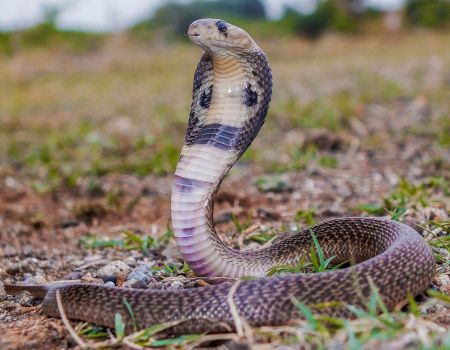
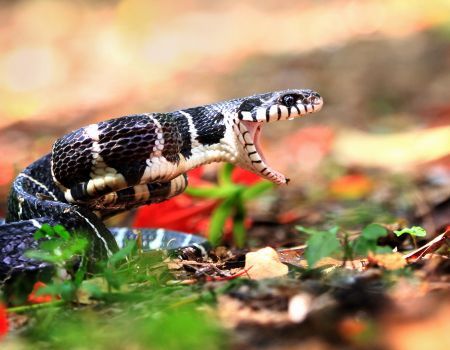
A Cobra in the open field | A snake posing to strike
In this post, I will share three crucial topics that are invaluable for you venturing into the great outdoors for camping or hiking. These insights will safeguard you effectively against the potential threat of snake bites.
- How to avoid snake bites?
- What To Do When Bit By A Snake?
- What Not To Do When Bit By A Snake?
How To Avoid Snake Bites?
Avoiding snake bites must be the priority for any camper or hiker. Prevention is always better than cure, and in this case, it could be a matter of life and death. Here are 10 tips for preventing snake bites while camping and hiking:
Be Prepared
Before heading out on a camping trip, research the area you will be staying in. Find out if any venomous snakes inhabit the region and what type of habitats they prefer, especially if you are going to snake country. This will give you an idea of where to be extra cautious. I have to include that even nonvenomous snakes can cause agonizing pain, so do respect them too.
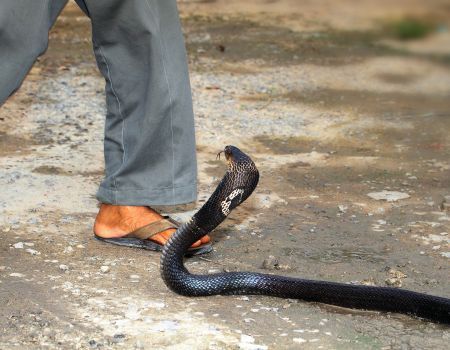
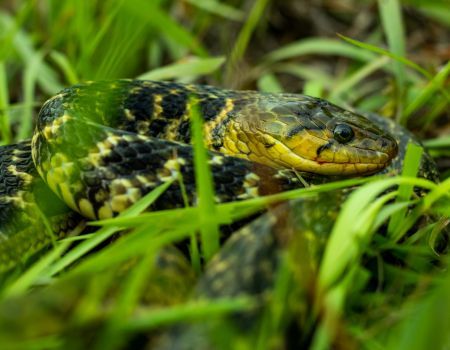
Man wearing slipper and pant encountering a venomous snake - a dangerous encounter - always wear shoes or boot while out in the wild | Snake hidden in tall weeds.
Wear Appropriate Clothing
When hiking or exploring the wilderness, wear long pants, boots, and thick socks to protect your legs and feet from potential snake bites. Avoid wearing sandals or open-toed shoes.
Be Aware of Your Surroundings
Be on the lookout for snakes when setting up camp or exploring the area. Watch where you step and avoid placing your hands or feet in areas that are not visible. Never try to feel for something that you cannot see, such as putting a hand or foot into a bush or behind a rock.
When moving through tall grass or weeds
Poke at the ground in front of you with a long stick to repel snakes. This seems like common sense but many hikers and campers do not seem to bother with this. In addition, if you see a snake in front of you, avoid it - Snake Safety 101.
Follow designated trails when hiking
Trails are well-trodden paths that offer fewer hiding spots for snakes. Additionally, since many hikers use these trails frequently, snakes are more likely to avoid these areas. This advice is also applicable to crowded camping grounds or popular sites.
Secure Your Tent
Snakes sometimes might crawl inside a camping tent, and this has happened to me before. It is important to secure the tent to the ground properly. I used a combination of ground pegs and heavy stones or boulders to weigh the tent down, forming a no-gap interface to the ground to deter snakes from entering your tent.
Hack: If you are still afraid that snakes could still sneak into your tent or worse, your sleeping bag, sprinkle some sulfur powder around the tent. Snakes hate the smell of this powder (learned from my parents years ago).
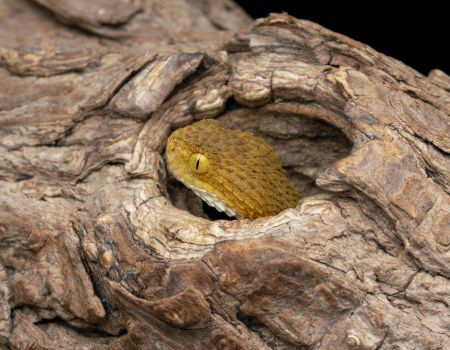
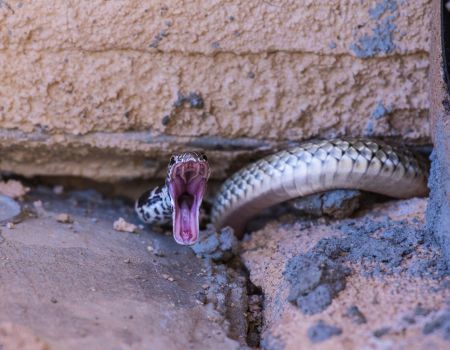
Snake Hiding in Tree Trunk and Beneath Boulder - These are their favorites' places to hide and it is always crucial to never feel around such place with your bare hands or feet.
Use a Chair or Ground cover
When sitting, use a chair or a ground cover rather than sitting directly on the ground.
Do not touch or disturb a snake
Even the snake appears to be dead. Some snake species can remain alive for several hours after dying, and their reflexes may cause them to bite. So, be aware of dead snake too.
Use a Flashlight at Night
Snakes are nocturnal creatures and may come out at night. Use a powerful flashlight for better visibility at night as it can be pitch dark when you are in the woods.
Never hike (or camp) alone in remote areas
Having a hiking or camping partner is important to help in a crisis, especially in a situation where you or your partner is bitten by a snake.
What To Do When Bit By A Snake?
If you or someone else is bitten by a snake, it's crucial to take immediate action. Here are the 7 steps to follow:
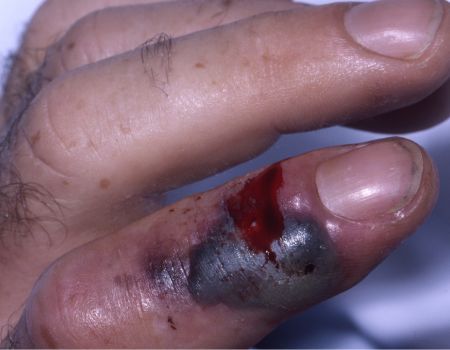
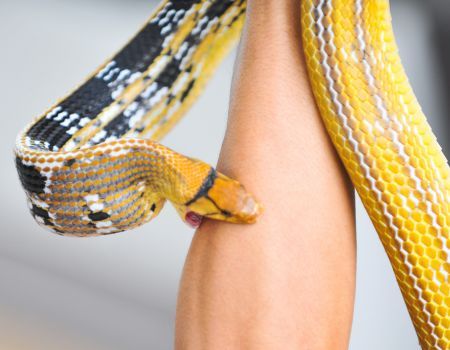
Finger Bitten by Snake and swollen | Snake Biting Arm
Remain Calm
Keeping calm and trying to stay still can help slow the spread of venom in the body.
Seek Medical Help
Call emergency services or go to the nearest hospital as soon as possible. Time is critical in treating a snakebite.
Positioning
Keep the bitten area below the level of the heart to slow down the spread of venom. Avoid excessive movement as it can help in limiting the venom's circulation.
Remove Constrictive Items
If the bite is on an arm or leg, remove any jewelry or clothing that may constrict blood flow if there is swelling.
Clean the Wound
Clean the bite area with soap and water if available. This reduces the risk of further infection.
Apply a Bandage
Use a clean, dry bandage to cover the bite, but don't restrict blood flow.
Identification
If it's safe and doesn't delay medical care, try to remember the snake's color, size, and shape to help with treatment, but don't risk getting bitten again. Have your hiking partner photograph the snake so that identification can be made to aid in treatment.
It's crucial to remember that every snake bite is different and the appropriate actions may vary depending on the situation. The best course of action is always to seek medical attention as soon as possible, whether it is a rattlesnake bite or some tiny skinny snake bite. Antivenom can be crucial and should be administered by medical professionals.
What Not To Do When Bit By A Snake
Equally important as knowing what to do during a snake bite, is understanding what NOT to do.
Do not apply a tourniquet or attempt to restrict blood flow.
Do not cut the wound or try to remove the venom with your mouth.
Do not try to suck out the venom.
Do not use a cold compress on the bite.
Do not drink alcohol or take any medication without consulting a medical professional first. Consuming alcohol or caffeine can increase the heart rate and the venom's spread.
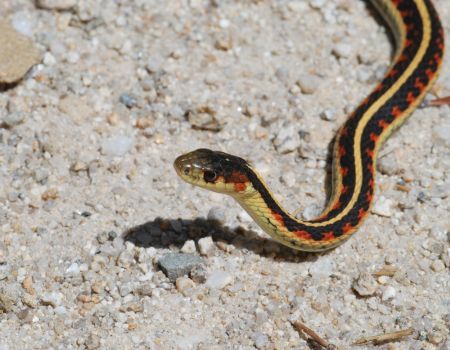
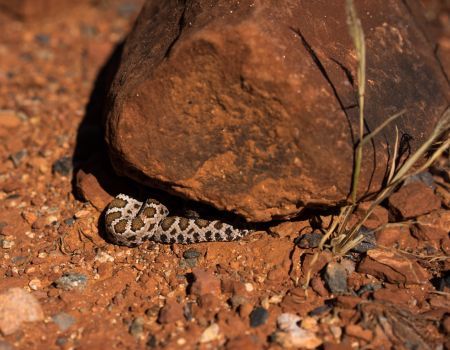
A snake slithering and sliding on the ground | Snake hiding below rock
FAQ - About Snake Bites and More
How to identify poisonous snake bites?
Fang marks: Typically, when there are two puncture wounds, it suggests a bite from a venomous snake. However, in the case of a bite from a non-venomous snake, you may observe small puncture wounds arranged in an arc.
Following the bite, you may experience an immediate sensation of burning, bursting, or throbbing pain, which can spread up the bitten limb.
Where do most snakes bite?
Snake bites commonly happen when someone handles or unintentionally comes into contact with them while walking or climbing. The hands, feet, and ankles are the most frequent targets of snakebites.
How many minutes do you have after a snake bite?
Upon being bitten, symptoms will manifest immediately and gradually worsen over time. It is crucial to seek medical assistance within 30 minutes of the incident to prevent further complications. Neglecting treatment can lead to the breakdown of bodily functions over 2 or 3 days, potentially resulting in severe organ damage or even fatality.
How do you get a snake to let go of a bite?
Gently apply a small amount of vodka, rum, or another high-proof alcohol near the snake's snout, allowing a small portion to enter their mouth. Mouthwash and vinegar can also be used in the same manner.
What do snakes hate most?
Powerful and pungent odors such as sulfur, vinegar, cinnamon, smoke, and spices, as well as foul, bitter, and ammonia-like scents, are typically the most prevalent and impactful deterrents for snakes. Snakes hate such strong smells, making them highly effective in repelling these reptiles.
What time of day are snakes most active?
Night. Nocturnal by nature, most snakes prefer to hunt under the cover of darkness. However, there are exceptional species that defy this pattern and remain active during the day such as coachwhips, for instance.
Final Thought
While snake bites are not common it's essential to be prepared and knowledgeable to ensure your safety while camping. Make sure you have a first aid kit, on hand and keep your phone charged for any emergencies that may arise.
Lastly, remember that prevention is the way to protect yourself from snake bites. Stay alert stay prepared and enjoy nature responsibly.
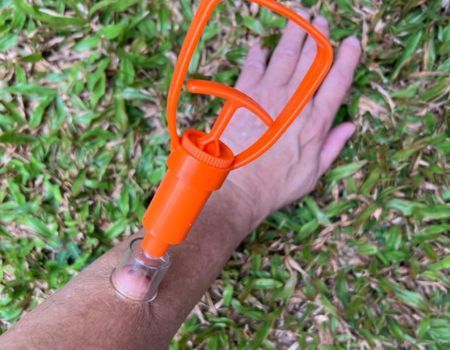
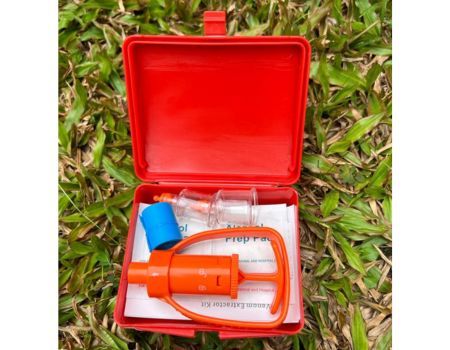
A simulated snake venom extraction using my old faithful pump kit | The Venom Extraction Kit with accessories.
Resources
Mayo Clinic: The Mayo Clinic website offers expert medical advice and information on snake bites, including symptoms, first aid, and treatment options: Mayo Clinic - First Aid for Snake Bites
Centers for Disease Control and Prevention (CDC): The CDC offers detailed information on snake bites, including prevention, treatment, and general guidance: CDC - Venomous Snakes
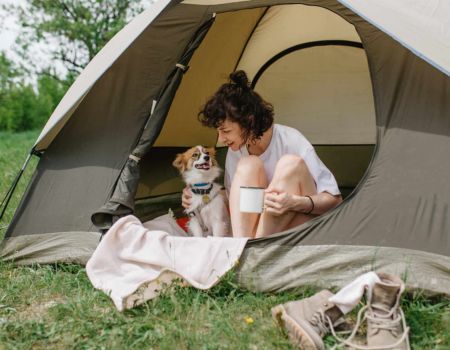
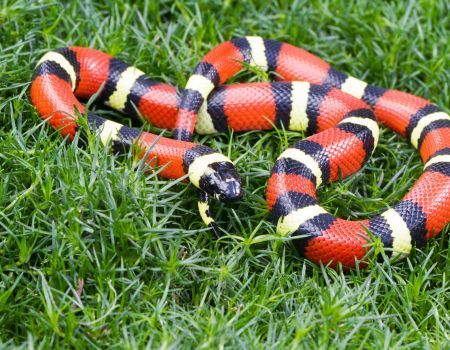
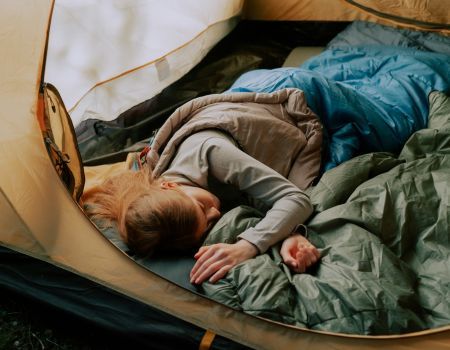
Woman and Dog happily camping | A Coral snake in the field (coral snakes are from the venomous species) | Couple sleeping inside tent - Always secure your camping tent to prevent snake from entering - Hack: sprinkle some sulfur powders around the tent as snake hates the smell.









